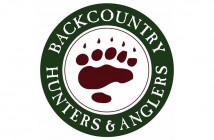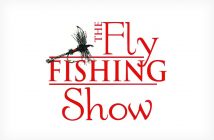
By Kirk Deeter
The big question many in the fly-fishing business community—from retailers and manufacturers, to travel agents and conservation organizations—wrestle with, and seldom agree on, is very basic:
“How many fly anglers are there in the United States?”
If you ask groups that have a vested interest in showing robust participation numbers, e.g. the Outdoor Industry Association, or the Recreational Boating and Fishing Foundation, they’ll say there are around 8 million fly anglers in the country.
If you ask the bamboo rod maker how many fly-fishing aficionados there are, they might answer a couple million, tops.
So who’s right? Well, in a way, they both are.
If you look at data from license sales and the like, the number of people who went fly fishing last year is around 8 million, give or take a million. But if you wonder how big the consumer market is for thousand-dollar fly rods, that number is realistically at least a few million lower.
The weird thing is that fly fishing envelops a complete spectrum of participants, from die-hards who live to fish, to the 18-year-old who floated on a guide trip for a day during the family vacation to Bozeman (but really spent 90 percent of their time fidgeting with their iPhone).
They’re all counted under the big umbrella. With so many levels of genuine interest (or lack thereof), however, it’s hard to compare fly fishing participation numbers with other outdoor sports. For example, not a lot of “dabblers” go on corporate outings and decide, to “whack a few ducks.”
As such, the smart play for those who want the most realistic picture of the fly-fishing market should be to revert back to that notion of a spectrum, with different colors representing different types of anglers, based on interest and involvement.
That might break out like this:
Red– Fishes 20+ times a year. Fishes both freshwater and saltwater. Has caught at least 15 different fish species on fly. Can spey cast. Owns 20 or more rods, including a bamboo rod. Spends north of $1500 a year on gear. Is a Life Member of TU and/or BTT. Travels specifically to fish every year, including international. Ties flies. Goes to film tours and fly-fishing shows. Buys books on fly fishing and subscribes to fly media. Doesn’t need a guide.
Orange– Fishes 20 times a year, six days of which are on the annual guided trip week to Montana. Is wealthy. Buys books and reads the magazines. Thinks they’re expert but they’re not quite there. Buys the highest quality gear. Annual members of TU and/or BTT but often let memberships lapse. Knows how to tie flies and has a bench, but doesn’t tie often. Loves to be part of the “tribe” and wears fishing apparel about town. Worships guides. Has fished in saltwater several times. Will go on an international trip every few years. Has a burgeoning carp fetish.
Yellow– Self-professed “intermediate.” Wants to learn. Loves being outdoors. Isn’t exactly loaded ($). Has other commitments that keep them from fishing (young family, work…). Still endeavors to get out once a month. Mostly trout fishes, but is “salt-curious.” Scours the Internet for information. Fishes for panfish with the kids. Has gone on one big trip and wants to do another. Just bought their first premium rod, or at least is thinking about it.
Green– Knows how to fly fish, because they learned as a kid. Might go out on the river a few times a year. Might be someone who tags along with friends or goes fishing with a significant other, but it isn’t their passion. Lives nearby fly-fishable water. Has some decent gear, mostly inherited, but might get talked into a new rod. Busy with family and has 10 other hobbies and 100 other ways to spend money. Would gladly go on a guide trip but that’s a big deal. Cares about clean water for reasons beyond just fishing.
Blue– “Fly-curious” crossover angler, who does fish conventional gear at least several times a year. Wants to carry a fly rod on the boat just to mix things up, but does not think of herself/himself as a fly “angler.” OR a complete newbie who is alone and adrift in fly fishing, but feels the calling for some strange reason. Intimidated by tricky things like casting and tying knots. Shops at Bass Pro and other big box stores. Would like to go on a guide trip if they could be guaranteed to catch fish.
Indigo– Likes to fish gear, and thinks fly-fishing is okay but not really all that interesting. Fishes for meat and counts fish. Ice fishes. Goes to a private ranch once a year for a company picnic where he/she mostly drinks beer, but does what a photo of himself/herself holding a large fish. Might hire a guide… to get a photo of themself with a fish. Doesn’t care about learning. Isn’t really going to buy anything, but usually wins the nicest rod at the charity raffle. Spends 95% of waking hours on pavement.
Violet– Went on a fly-fishing guide trip as part of a corporate outing or family vacation. Spent 90 percent of that time on their smart phone. Owns no gear. Has zero interest in buying gear. Also has no interest in learning how to cast, pick flies, make a drift, or any other aspect of fly fishing. In the dentist’s waiting room, with 15 sporting magazines on the coffee table, will dig through the stack to find GQ or Vogue. Fell in the river when they waded. Will probably never come back.
**Note: these color descriptions represent adult anglers.
The interesting thing about thinking in the context of a spectrum is that you start understanding what’s happening in the market and why. Who is selling to whom? What colors are hot and what aren’t? (Naturally the “hot” side of the spectrum tends to be where a lot of the action is… but sometimes, read “pandemic” when the newbies boomed, the action is with yellows, greens and blues.)
At least it was. Sometimes, when those colors slow back down, manufacturers are stuck with, say, a glut of starter kits and rod/reel combos in inventory.
I just spoke with the head of a major rod company, who explained that their saltwater rods are, at this moment, outselling trout rods. That used to be unthinkable in a market where 75 percent of product SKUs were trout-centric. Why is this? Because the “red and oranges” can travel now. They’ve been pent up… stuck on overcrowded trout rivers with everyone else for the past two years… got sick of that bullshit and headed for the tropics. And they bought a new rod to take with them. Don’t believe me? Try booking a trip to Belize these days.
The moral of the story is that this industry is in very choppy, uncharted waters. We (Angling Trade editors) think that trout fishing will remain strong when the seasons turn and the water we’ve been waiting for (in some places at least) comes into play.
But now, more than ever, businesses of all sizes should be thinking very hard about who they’re marketing to and why. Making blanket assumptions about fly-fishing consumers and lumping them all together is a very dangerous game, especially if you don’t want to get stuck sitting on piles of product you cannot move.
It’s important to see the whole picture, and for better or worse… that picture is quite colorful these days.



2 Comments
I’m surprised there wasn’t more focus on warm water fly fishing, that seems to be the major focus in my region of the Great Lakes area.
Interesting that Kirk excludes Fly Fishing International members from being serious fly fishers. Also accordind to Kirk, you are only serious if you focus on trout or saltwater. There are millions of us that do not live in Colorado and focus on smallmouth, carp panfish, etc. I have read and enjoyed many articles by Kirk, but did not realize what a trout bigot he was.